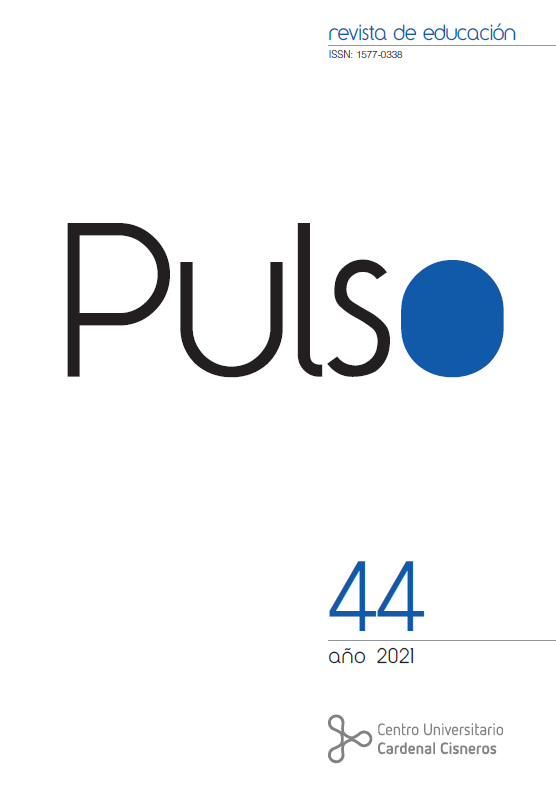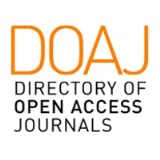"The shadow of identity", an experience on visual culture during the upper secondary school stage
DOI:
https://doi.org/10.58265/pulso.4657Keywords:
Identity, Adolescence, Art education, Visual cultureAbstract
During adolescence and puberty, each person begins to become aware of their own identity, which will have a significant impact on their education during formative years , both in the interpersonal relationships created, and in the students’ individual development. This article reports on the pedagogical experience of students enrolled in the first year of optional upper secondary school within the area of Humanities in the Canary Islands (Spain). The context of this experience is from the subject Audiovisual Culture, which addresses the concepts of individual, cultural, and collective identity through visual culture. It is an educational intervention based on creative project-based learning and grounded in Wendy Ewald’s Literacy Through Photography (LTP) method. The main objective of this proposal is built on understanding students’ personal identity to favor coexistence and integration in
the classrooms. Although the results obtained show a positive impact on the classroom climate and the relationships that were formed, it is true that more time and a follow-up are needed during the process when considering proposals for improvement.
Downloads
References
Acaso, M. (2009). La educación artística no son manualidades. Nuevas Prácticas en la Enseñanza de las Artes y la Cultura Visual. Los libros de la Catarata.
Acaso, M. y Megías, C. (2017). Art Thinking. Cómo el arte puede transformar la educación. Paidós Educación.
Adams, A.; Daly, J.; Fisher, D. J.; Hines, H.; Iron, D.; March, D.; Samuels, L. y Tahler, J. (Productores ejecutivo). (2021-presente). Lose Yourself (Temporada 1, Episodio 8) [Capítulo de serie de televisión].
Ginny & Georgia [Serie de Televisión]. Madica Productions; Critical Content; Dynamic Television.
Alonso, M.A. y Orduña, S. (2013). Referentes relativos a la identidad en la cultura visual infantil. Aula de Innovación Educativa, 220, 18-24. https://bit.ly/3CKhrvA
Aparici, R. y García-Matilla, A. (1989). Lectura de imágenes. Proyecto Didáctico Quirón, 6. Ediciones de la Torre.
Barrie, J. M. (2006). Peter Pan y Wendy. Editorial Blume.
Bauman, Z. (2005). Identidad. Editorial Losada.
Cantent, L. (Director). (2008). Entre les murs [Película]. Carole Scotte y Caroline Benjo Producteur.
Casanova, M. A. (2005). La interculturalidad como factor de calidad en la escuela. En Soriano, E. (coord.). La interculturalidad como factor de calidad educativa (pp. 19-40). Editorial La Muralla, S.A.
Chalmers, F. G. (2003). Arte, educación y diversidad cultural. Ediciones Paidós Ibérica, S.A.
Contreras, José (2011). III Parte: Hilos de Creación. Escuchar lo que nos cuentan. En Hernández, Fernando (coord.).¿Qué nos cuentan los jóvenes? Narraciones biográficas sobre las relaciones de los jóvenes con el saber en la escuela secundaria (pp. 218-222). Dipòsit Digital UB. http://hdl.handle.net/2445/18348
Decreto 83/2016, de 4 de julio, por el que se establece el currículo de la Educación secundaria Obligatoria y el Bachillerato en la Comunidad Autónoma de Canarias. Boletín Oficial de Canarias, de 15 de julio de 2016. https://bit.ly/3f6f2T4
Ewald, W.; Hyde, K. y Lord, L. (2012). Literacy and Justice Through Photography: A Classroom Guide. Teacher’s College Press.
Falcón, L. y Díaz-Aguado, M.J. (2014). Relatos audiovisuales de ficción sobre la identidad adolescente. Comunicar, Revista Científica de Educomunicación, XXI (42), 147-155. http://dx.doi.org/10.3916/C42-2014-14
Gardner, H. y Davis, K. (2014). La Generación App: Cómo los jóvenes gestionan su identidad, su privacidad y su imaginación en el mundo digital. Ediciones Paidós.
Gómez, C. y Fontal, O. (2017). Procesos de identización en el arte contemporáneo: construir una identidad colectiva a través de una cartografía identitaria en la red. Cuadernos de Música, Artes Visuales y Artes Escénicas, 12(2), 299-319.
Hernández, F. (2000). Educación y cultura visual. Ediciones Octaedro, S.L.
Murray, D. (2020). La masa enfurecida. Cómo las políticas de identidad llevaron al mundo a la locura. Ediciones Península.
Sancho, J. M. (29 de septiembre de 2020). Caminos y derivas para otra investigación educativa y social. Intervención de Sancho, J.M. en la presentación del libro emitida en directo por la editorial Octaedro. Disponible en https://bit.ly/2Su3LTu
Son, D.; McCarthy, T.; Gorman-Wettels, J.; Golin, S.; Sugar, M.; Gomez, S.; Teefey, M. y Laiblin, K. (Productores ejecutivo). (2017-2020). Yeah. I’m the New Girl (Temporada 3, Episodio 1) [Capítulo de serie de televisión]. 13 Reasons Why [Serie de televisión]. July Moon Productions; Kicked to the Curb Productions; Anonymous Content; Paramount Television.
Soriano, E. y Fuentes, C. (2003). Planificación de la mediación intercultural en los contextos educativos. En Soriano, E. (coord.). Diversidad étnica y cultural en las aulas (pp. 181-212). Editorial La Muralla, S.A.
Trujillo, F. (2015). Aprendizaje basado en proyectos: infantil, primaria y secundaria. Ministerio de Educación y Formación Profesional de España.
Downloads
Published
How to Cite
Issue
Section
License
Copyright (c) 2022 Pulso. Revista de educación

This work is licensed under a Creative Commons Attribution-NonCommercial-NoDerivatives 3.0 Unported License.
This journal offers immediate open access to its content based on the idea that offering readers free access to research favours a global exchange of knowledge.
Papers are published in the electronic version of the journal under a Creative Commons License: Attribution-NonCommercial-No derivatives 4.0 International
Authors are allowed and encouraged to promote the post-print version (reviewed and accepted for publication version) of their work online before publishing them. This favours their earlier circulation and dissemination and thus a possible increase in their citation and reach among the academic community.














